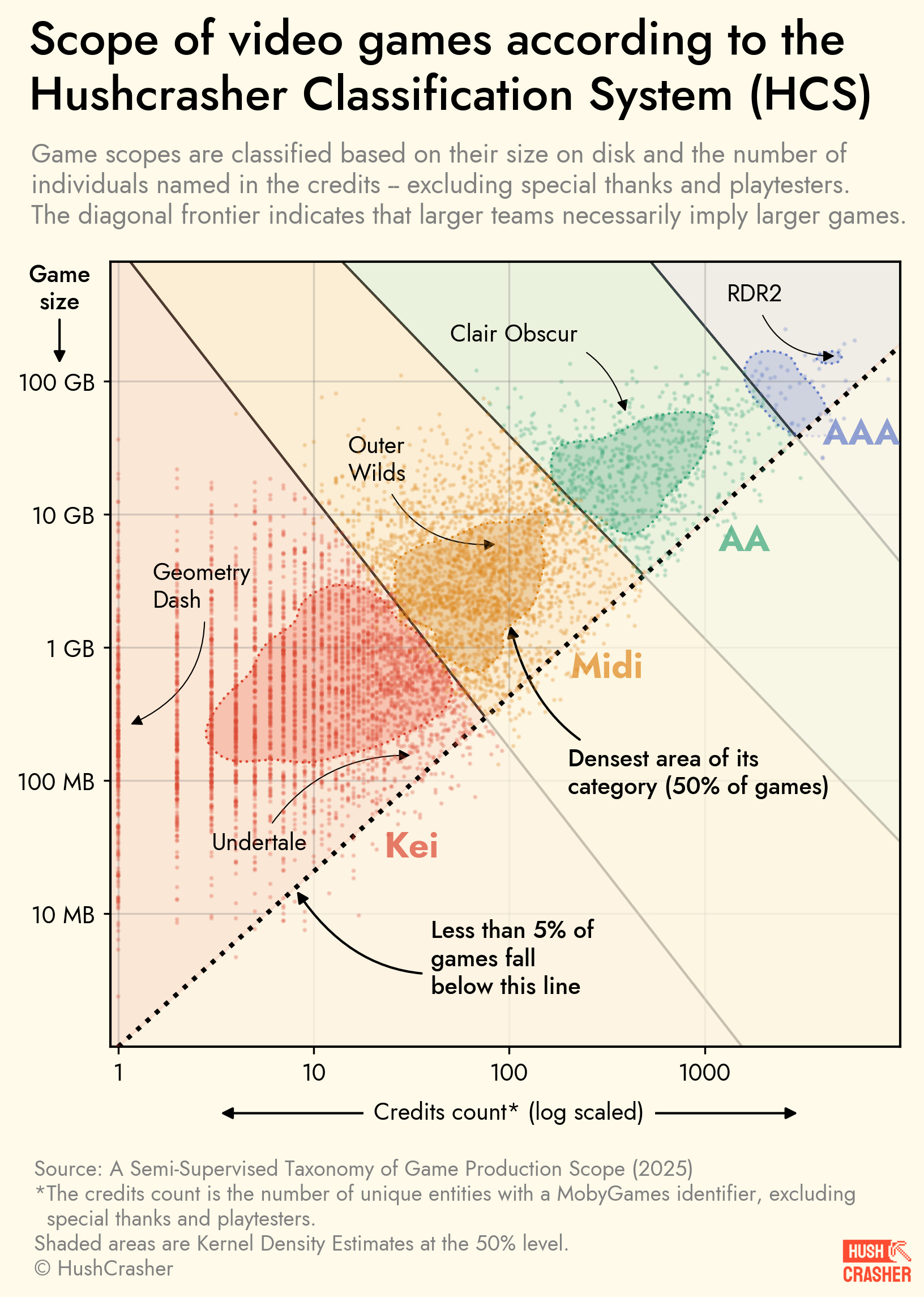Humans are smart, so we know deep down that every attempt we make to classify the things we create is fraught with peril, because so much of what we create evades strict definition. But humans are also humans, meaning we can't resist doing it anyway.
Few examples of this are more annoying to people into video games than video games, where genre labels are constantly being stretched, and we feel the need to cram years upon years of the medium's history into the easily-digestible idea of console generations. One of the most annoying examples of this are the ways we continually try--and fail--to describe the scale of a video game's creation.
We appear to have settled on labels like "AAA" (big, expensive game"), "AA" (smaller, cheaper game but still feels somewhat expensive?) and "Indie", which can mean whatever the person using the label wants it to mean. Terms like this can be useful in some ways--someone describing the sickness at the heart of AAA game development is getting their point across--but pointless in others.
Which is why I'm very into this latest attempt by Antoine Mayerowitz and Julie Belzanne to throw those old labels in the bin and replace them with new ones, which have fresh flaws of their own but are no less interesting because of them.

Eschewing the idea that you can classify a game's development scale by "vibes" (which I don't necessarily agree with, as vibes are ethereal but also important) they instead, for the sake of being able to express this through data, looked at a whole bunch of games and sorted them according to a variety of factors, with two emerging as the most important: their size (in MBs) and the size of their credits list.
Again, this isn't perfect; QA testers are excluded, which I understand for data's sake given it's hard to nail down exact numbers, but disagree with philosophically. And classifying games based on those two factors but not also their overall cost in dollar terms--a bigger team size and game size will usually suggest a bigger budget, but not always!--feels like it's going to throw up some weird results as well.
Like I've said though, I'm not interested in this because I think it's objectively a better way of classifying games, but because it's refreshingly different. And also because as you can see from the cluster of results they found that there are definitely some broad trends (and clear "clusters") you can pick up on here.
They call this the Hushcrasher Classification System, and say its main point is that it's been "designed to cut through the noise". There is a lot more to it than my broad little introduction there; I encourage you to read the whole proposal, which contains a bunch of sales and (old) genre data supporting their new labels.
And if you want to map any game you want to the chart? You can do that here too; see where it stacks up!
[Thanks Arvy!]


